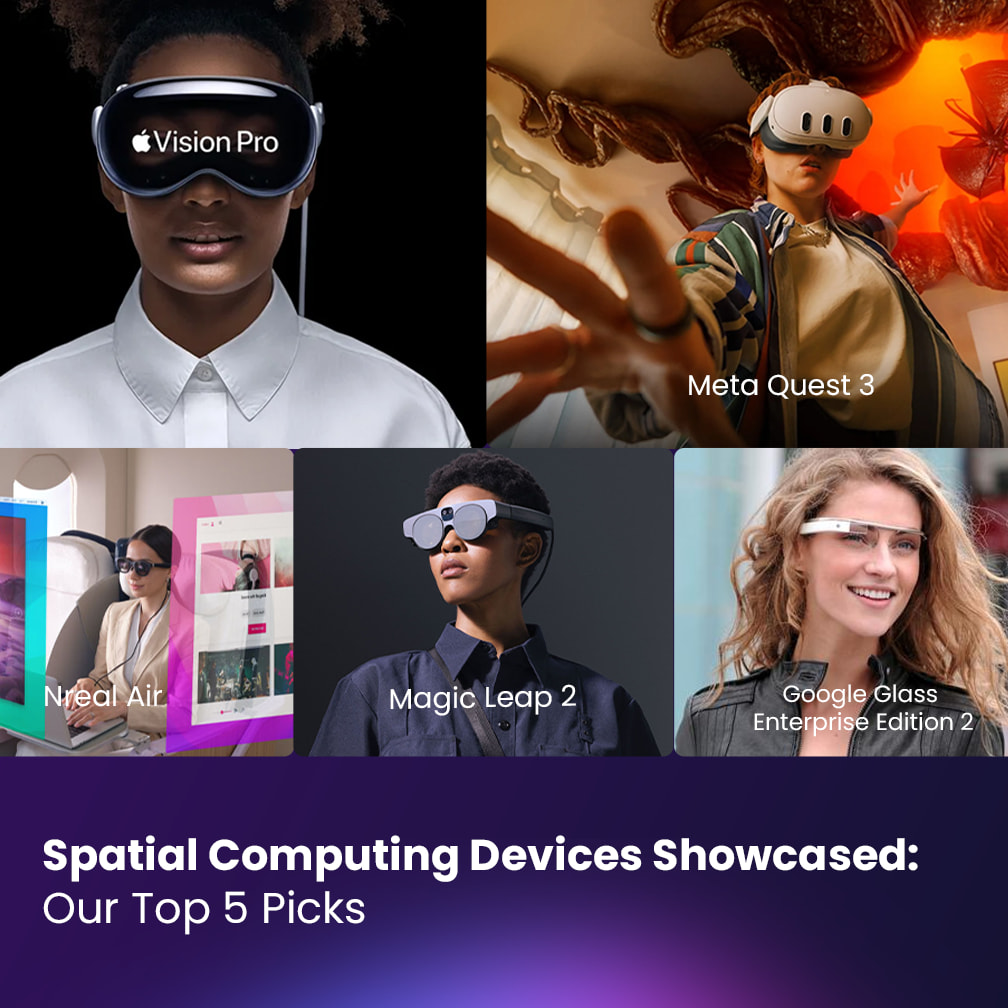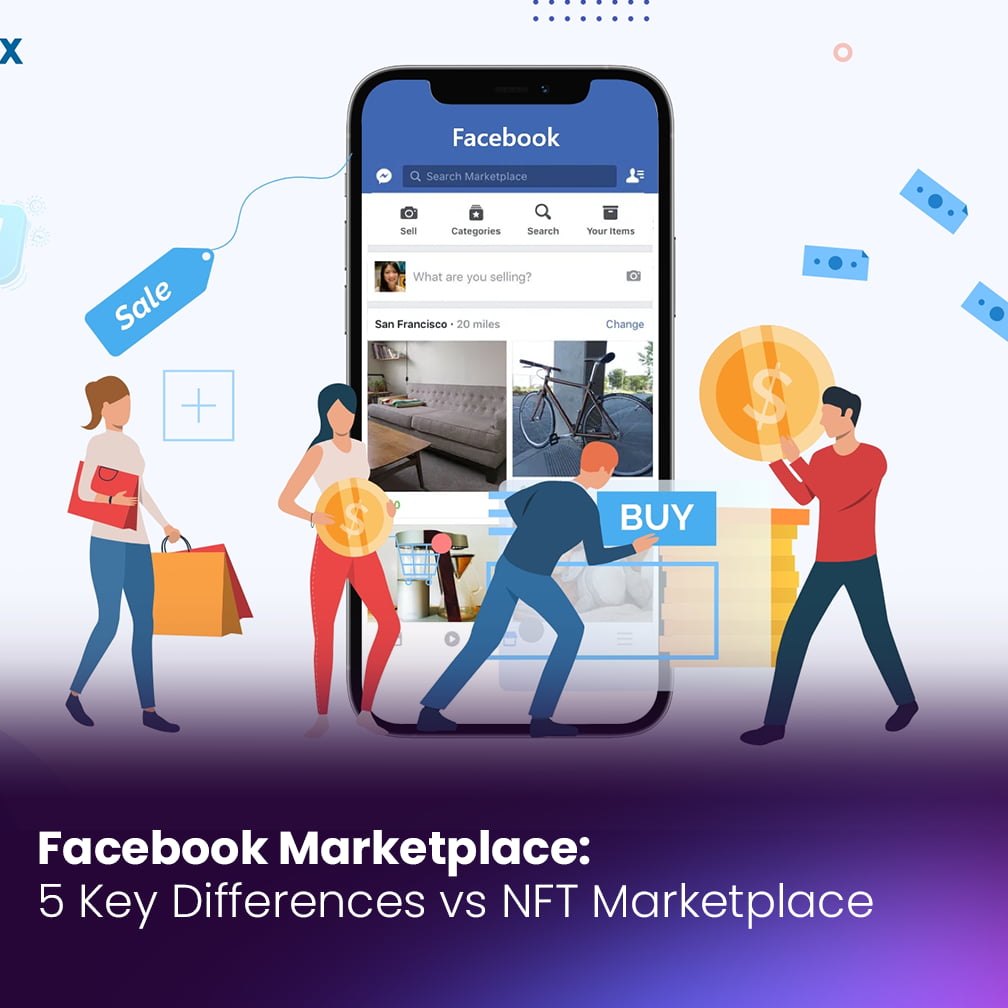Spatial Computing Devices Showcased: Our Top 5 Picks

Spatial Computing Devices are the next big thing in technology. It’s the ability to interact with computers in a three-dimensional space, and it has the potential to change the way we do everything from shopping to gaming to education.
Explore five spatial computing devices that will revolutionize the world in the coming months in this blog post.
Table of contents
1. Apple® Vision Pro
Apple®’s rumored augmented reality glasses, the Apple® Vision Pro, are one of the most anticipated spatial computing devices of 2023. These glasses will reportedly allow users to interact with digital objects in the real world, overlaying information and graphics onto their surroundings.
The Apple® Vision Pro could have a major impact on a variety of industries, including healthcare, education, and retail. For example, doctors could use glasses to view patient data in real time, while teachers could use them to create interactive learning experiences for students.
2. Meta Quest 3
The Meta Quest 3 is the successor to the popular Meta Quest 2 VR headset. Obviously, experts anticipate that this new headset will boast a higher resolution display, improved tracking, and a more powerful processor.
Meta Quest 3 could make VR more accessible to a wider range of users. It could also be used for a variety of new applications, such as virtual training simulations and immersive gaming experiences.
3. Nreal Air
The Nreal Air are lightweight augmented reality glasses that connect to your smartphone. These glasses allow you to view digital objects in the real world, and they can be used for a variety of tasks, such as watching videos, playing games, and getting directions.
The Nreal Air are a more affordable option than some of the other spatial computing devices on this list. They could make AR more accessible to a wider range of users.
4. Magic Leap 2
The Magic Leap 2 is a self-contained augmented reality headset that doesn’t require a smartphone or computer to operate. Additionally, this headset features a high-resolution display, a powerful processor, and a variety of sensors that allow it to track your movements and surroundings.
The Magic Leap 2 is one of the most advanced spatial computing devices on the market. Because users can utilize it across various applications, including enterprise training, medical visualization, and gaming.
5. Google Glass Enterprise Edition 2
The Google Glass Enterprise Edition 2 represents a wearable augmented reality device specifically designed for businesses. Basically, this device allows workers to view information and instructions in their field of view, while keeping their hands free.
The Google Glass Enterprise Edition 2 serves multiple tasks like picking and packing orders in a warehouse, assembling products on a factory floor, or offering customer service in a retail store.
Get Ready for the Unexpected
Think beyond just headsets and glasses. Imagine spatial computing embedded in everyday objects, like your furniture transforming into interactive displays or your walls morphing into portals to virtual worlds. Imagine classrooms where lessons spring to life in 3D, or surgery simulations so realistic you can practically smell the disinfectant. This isn’t science fiction; it’s the dawn of a new era.
Beyond Entertainment, a Revolution Awaits
Yes, gaming and entertainment will be mind-blowing with spatial computing. But the true revolution lies in its potential to transform industries we never even considered. Imagine architects building holographic models of cityscapes, construction workers using AR overlays to guide precision assembly, or doctors performing remote surgery with robotic hands controlled by their thoughts. The possibilities are as limitless as your imagination.
Challenges to Conquer, But the Payoff is Worth It
Of course, every frontier comes with its hurdles. Privacy concerns loom large, ethical considerations need careful navigation, and accessibility for all must be a top priority. But with careful planning and collaboration, we can navigate these challenges and ensure that the benefits of spatial computing reach everyone, not just the privileged few.
So, are you ready to step into this brave new world? The future is beckoning, and spatial computing devices are our passports. Embrace the possibilities, explore the uncharted territories, and help shape a future where technology empowers us to connect, create, and solve problems in ways we never dreamt possible.
Remember, it’s not just about wearing fancy gadgets; it’s about opening your mind to a new way of experiencing the world around you. So, ditch the skepticism and grab your curiosity. Discover the greatest adventures not only on distant planets but also just a blink away through the lens of spatial computing.
Join the conversation! Let us know in the comments below what excites you most about the future of spatial computing. So, let’s share our ideas and build a vision of tomorrow that’s as bold and limitless as the technology itself.
Conclusion
As game-changing devices like Apple Vision Pro and Meta Quest Pro hit the market, their full potential shines through versatile platforms adapting experiences across hardware and software. Stage Meta stands alone in its commitment to boundless spatial computing advancement synchronized seamlessly over any device. When users freely transport immersive creations through an expanded reality, the future officially arrives.
For more information and to dive deeper into the boundless possibilities of Stage Meta and TPA, soon visit Stage Meta’s Homepage. The future is now, and it awaits you.
Welcome to the new age of Spatial Computing. Welcome to Stage Meta.








